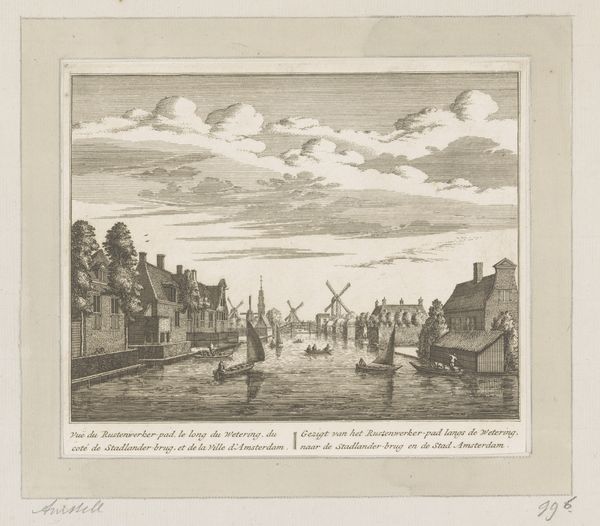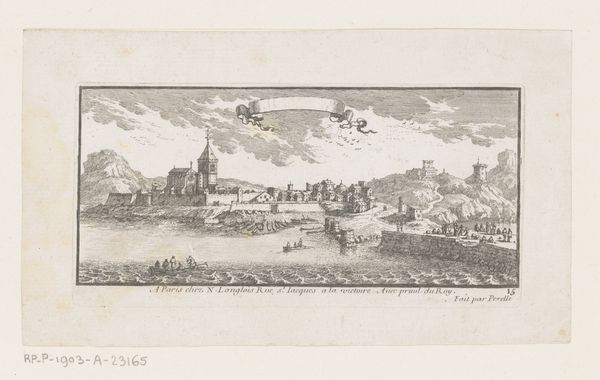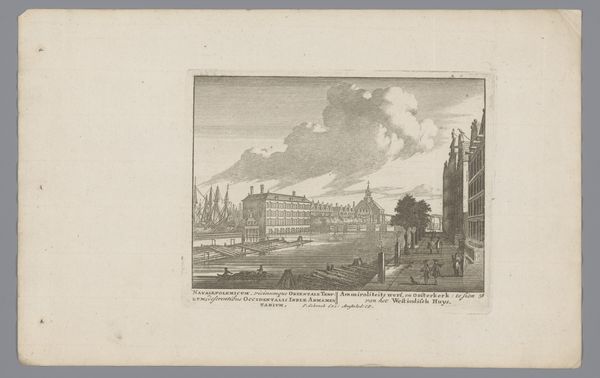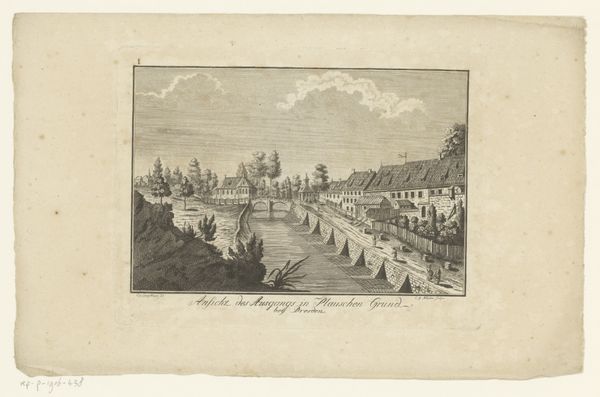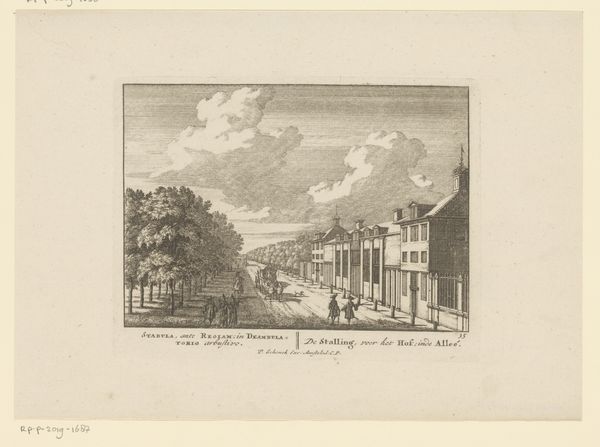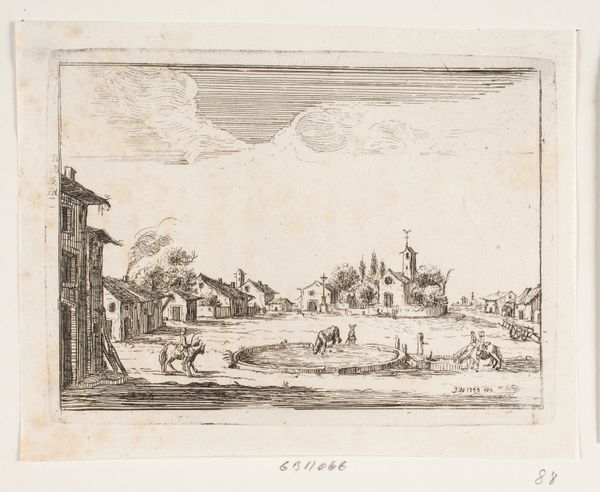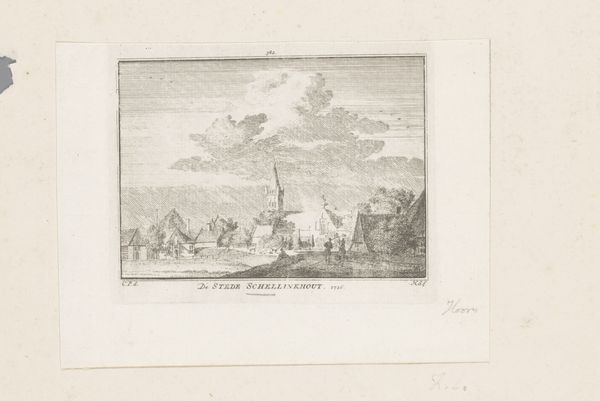
print, engraving
#
baroque
# print
#
landscape
#
cityscape
#
engraving
Dimensions: height 164 mm, width 194 mm
Copyright: Rijks Museum: Open Domain
Editor: We're looking at "Gezicht op de wetering vanaf de Stadlanderbrug" by Abraham Rademaker, dating from 1730. It's an engraving on paper currently housed in the Rijksmuseum. There's such a calmness to it, a serene depiction of a waterway… How do you interpret this work? Curator: Well, consider the socio-political climate of 18th-century Amsterdam. This image, and others like it, served a distinct purpose beyond simple aesthetics. This print gives us access to a moment in Dutch history – its function went hand in hand with creating Dutch national identity, and promoting urban growth. Who were the patrons of such views, and what message was Rademaker trying to communicate through this portrayal of orderly buildings, clean waterways, and calm commerce? Editor: So, it's not just a pretty picture, it’s more about building a visual record of Amsterdam's status? Curator: Exactly! Think of it as propaganda. It's promoting a certain ideal, perhaps a subtle form of civic pride. Consider who has access to these prints. Would the average person have a similar viewpoint, or do such representations present a specific and perhaps even idealized public face of the city. Rademaker likely sought patrons among the city’s elite. Editor: I never thought of landscapes being political like that! I’m used to thinking of history paintings, portraits of rulers... Curator: Cityscapes are as involved in shaping power as those pieces; remember that art production depends on historical power structures, economic capacity, and institutional factors, for the simple reason that, well, artists need to eat! How art serves the people versus how art is funded – this informs our perception of an artist's place within a nation’s cultural history. Editor: That makes so much sense. So by studying the art, we learn how these pieces shape and reflect that history. I'll certainly look at landscapes differently now. Curator: Indeed! It encourages a critical lens, prompting you to think: who created this image, and what do they hope to achieve by making it accessible to the public?
Comments
No comments
Be the first to comment and join the conversation on the ultimate creative platform.
